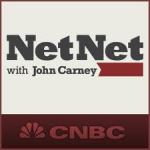![]() excerpt from Olly Ludwig’s Nov 30 column
excerpt from Olly Ludwig’s Nov 30 column
You might think that having Knight Capital in play could be a threat to ETF trading. Luckily it’s not.
Still, it struck me that thinking through the possibilities surrounding an acquisition of Knight by Getco or Virtu is a worthwhile exercise.
After all, Knight is the biggest ETF market maker out there, and if Knight’s transition to new ownership is fraught with unexpected twists and turns, does that mean that many exchange-traded funds, especially the smaller, less liquid ones Knight shepherds, won’t get the love they need to trade cleanly?
Specifically, I found myself wondering if ETF trading would be adversely affected if Reggie Browne and his team at Knight don’t land on their feet but rather somewhere else on the Street.
If you’re wondering who Reggie Browne is, you need to read Ari Weinberg’s story in Forbes about Browne. Calling Browne “The Godfather of ETFs” did elicit derisive guffaws in some pockets of the ETF industry, but the piece makes an important point: Knight and Browne are big fish in ETF trading.
Knowing that makes the acquisition of Knight by Getco or perhaps Virtu entirely understandable. What upstart trading firm wouldn’t want that feather in its cap? It would be a strong signal that whoever ends up buying Knight has grown up and moved out of the sandbox and into the shark tank.
Incidentally, our thinking here at IndexUniverse on this potential acquisition of Knight is that this is pretty much a corporate story, that Browne and his team are likely to make a smooth transition to wherever they end up, and the world of ETF trading really won’t be affected whatsoever (MarketsMuse editor note: MAYBE)
Still, as I said, I thought it might be worthwhile to look at the story behind the story.
And the crux of that story is that the ETF trading operation—that is, Reggie and his team—is a huge piece of the motivation to do this deal.
MarketsMuse Editor Note–the full IndexUniverse article can be viewed here—but before clicking away..read a superb comment on that article–and its worth re-broadcasting:
One critical observation that has NOT been made re: role of ‘Godfather Knight’ (or any proprietary trading firm) within the ETF landscape: Knight is a Market-Making firm–NOT a broker. Brokers work as fiduciary agents For customers, market makers (aka MMs) trade Against customers’ best interests. This is NOT a slanted bash on MMs. Having been one for many years (as well as having been a major exchange specialist—a now antiquated role that mandated putting customer interests ahead of all else), MMs Absolutely Do Perform an Integral Role within the ecosystem….. But, MMs (Knight and all others) trade at risk when it suits THEIR profit purpose, not because of an altruistic desire to simply facilitate a customer’s investment/trading strategy.
Given the massive institutional use of ETFs, PMs and RIAs, as well as their custodians should [hopefully] hold themselves to a particularly high fiduciary obligation to secure the best available price in the marketplace when buying/selling. If only evidenced by the ongoing attention on Knight, it would seem that many investors (or maybe its just the media) have yet to focus on the notion of aggregated prices and better brokers who systematically canvass all ‘liquidity centers” to capture the best aggregated price based on all of the players interests. It really is that simple, but few people want to deliver this message for various political reasons.
In the ETF world, MMs “accommodate” a customer order ONLY if/when (i) they have first determined that they can capture a risk-free ‘spread’ that exists either at a ‘dark pool’ accessible by the market-maker but not the customer, or (ii) when there is a risk free spread between the cash ETF and the underlying components thanks to the fragmentation of screen-based markets. More simply—if the MM is selling the cash ETF to a customer, the MM will concurrently be buying each of the underlying components –effectively ‘creating’ the ETF-but only when the aggregate price of the underlying components is less than the price of the cash ETF. Could the customer do the same arbitraging? That depends. But they can certainly use a broker that canvasses the market properly.
Any market that relies on, or has come to depend exclusively on one primary player is not a marketplace. More importantly- when one player is perceived as the dominant in the space, any snafu will wreak havoc on the market itself and the credibility of the product. In Knight’s case we can look to 2 recent events that created temporary havoc—which is presumably why this firm is about to come under new ownership (again).

 Courtesy of Eric Lim/Bloomberg LP
Courtesy of Eric Lim/Bloomberg LP


 ].
].

 1.6992 (+8.56%)
1.6992 (+8.56%) 